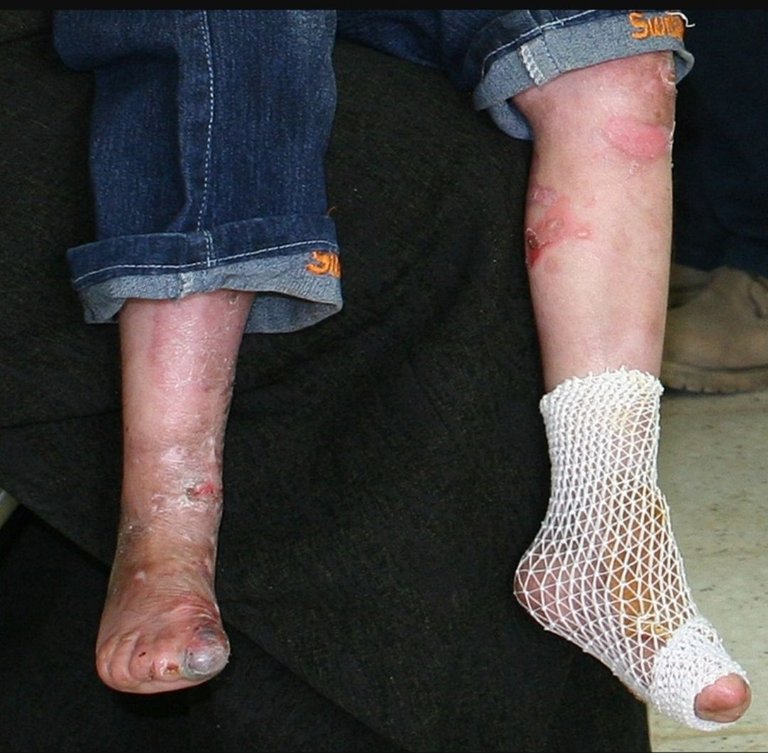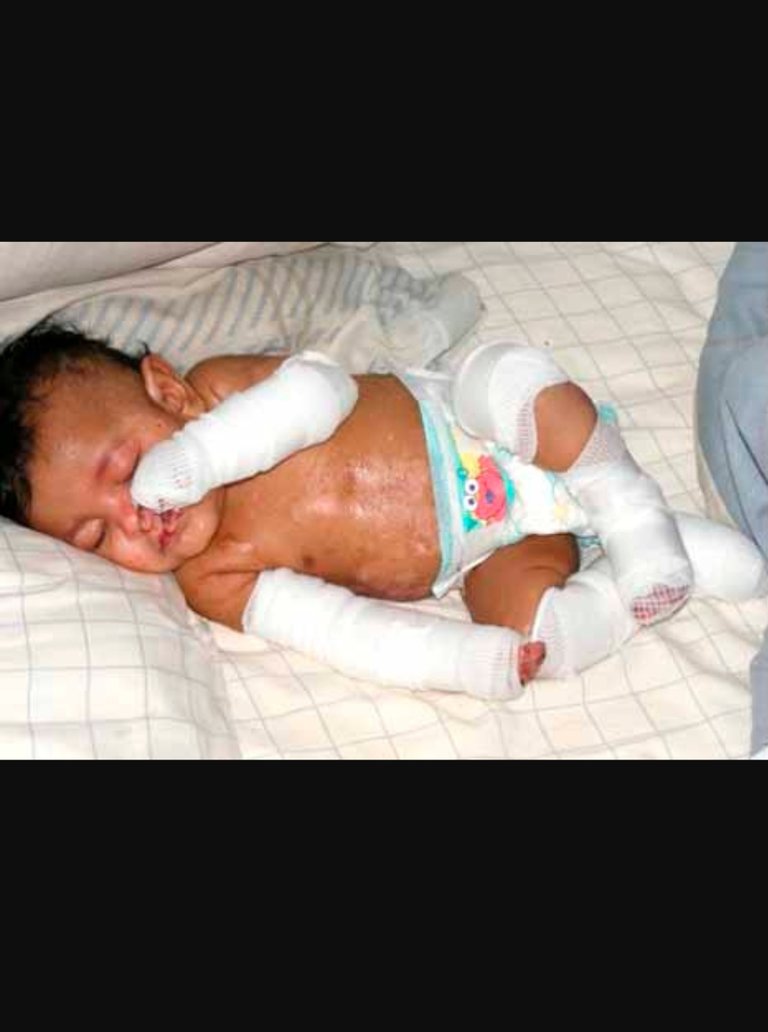Epidermolysis Bullosa a strange condition.
Epidermolysis Bullosa a strange condition.
Hello hive community, today I bring you a very interesting topic, it is Epidermolysis Bullosa or Bullosa (EB). This is a rare medical condition in which blisters appear on the skin after a minor injury.
• Three forms of EB are known:
- Dystrophic epidermolysis bullosa.
- Epidermolysis bullosa simplex.
- Junctional epidermolysis bullosa.
This disease can present from a mild form to more serious forms that compromise the patient's life. Although it is difficult to classify the specific type of EB in each case, a genetic study is always necessary. This condition usually occurs at birth or at an early age.
The hereditary component means that if a father has EB it is possible that his offspring will also have it.
However, there is a form of EB that occurs after the child is born and is autoimmune or acquired.
• Symptoms:
- Alopecia (Hair loss)
- Blisters on eyes and nose.
- Blisters on the oral mucosa and throat that make swallowing difficult.
- Loss of nails or poorly formed nails.
- Fusion of the fingers.
- Gastrointestinal and organic problems.
• Diagnostic tests:
- Genetic studies.
- Blood tests.
• Treatments:
Treatment consists of avoiding the formation of blisters to avoid associated complications.
Surgical treatments include skin grafts in cases of very deep wounds.
Widening of the esophagus if necessary.
Repair of hand deformities.
Other treatments also include immunosuppressive medications in autoimmune cases of this disease. There are currently studies with interferon and stem cells that could greatly improve the quality of life of these patients in the future.
• Prognosis: in mild cases this condition usually improves on its own with increasing age of the individual. However, in more aggressive cases, the scars left by the blisters can cause joint deformities and problems swallowing and chewing.
• Complications:
Among the most common complications are anemia, narrowing of the esophagus, and decreased life expectancy in the most aggressive cases. Eye infections. Heart and kidney problems. Skin cancer among others.
Regarding the prevention of this disease, genetic study of the parents is essential to determine if there are risks of the baby suffering from it, especially in cases where one of the parents has a family history of this condition.
To make a correct diagnosis and treatment, it is always necessary to consult a doctor and seek specialized help.
Thanks for reading me!!
Consultation links :
• Descripción general Epidermólisis bullosa
Text translated with Deepl Translate.
Banner created in Canva.

Epidermólisis Bullosa una extraña condición.
Hola comunidad de hive hoy les traigo un tema muy interesante , se trata de la Epidermólisis Bullosa o Ampollosa (EB). Esta es una condición médica poco común en la que aparecen ampollas en la piel despues de una lesión leve.
• Se conocen tres formas de EB :
- Epidermólisis bullosa distrófica.
- Epidermólisis bullosa simple.
- Epidermólisis bullosa juntural.
Esta enfermedad puede presentarse desde una forma leve hasta formas más graves que comprometen la vida del paciente. Aunque es difícil clasificar el tipo específico de EB en cada caso , siempre es necesario un estudio genético. Esta condición suele presentarse al nacer o a edades tempranas.
El componente hereditario hace que si un padre tiene EB es posible que su descendencia tambien la tenga.
Sin embargo existe una forma de EB que se presenta luego de nacer el niño y es de carácter autoinmune o adquirida.
• Sintomas:
- Alopecia (Caída del cabello)
- Ampollas en ojos y nariz.
- Ampollas en la mucosa bucal y garganta que dificultan tragar.
- Pérdida de las uñas o uñas mal formadas.
- Fusión de los dedos.
- Problemas gastrointestinales y orgánicos.
• Exámenes diagnósticos:
- Estudios genéticos.
- Exámenes de sangre.
• Tratamientos:
El tratamiento consiste en evitar la formación de ampollas para evitar complicaciones asociadas.
Los tratamientos quirúrgicos se encuentran los injertos de piel en casos de heridas muy profundas.
Ensanchamiento del esófago en los casos que sea necesario.
Reparación de deformidades en las manos.
Otros tratamientos tambien incluyen medicamentos inmunosupresores en los casos autoinmunes de esta enfermedad. En la actualidad existen estudios con interferón y células madre que podrían mejorar grandemente la calidad de vida de estos pacientes en el futuro.
• Pronóstico: en los casos leves esta condición suele mejorar por si sola con el aumento de la edad del individuo. Sin embargo en casos mas agresivos las cicatrices dejadas por las ampollas pueden causar deformidades en las articulaciones y problemas para tragar y masticar.
• Complicaciones:
Entre las complicaciones mas comunes estan la anemia, estrechamiento del esófago, disminución de la expectativa de vida en los casos mas agresivos. Infecciones oculares. Problemas cardíacos y renales. Cáncer de piel entre otros.
En cuanto a la prevención de esta enfermedad es fundamental el estudio genético de los padres para determinar si existen riesgos de que el bebé la sufra sobre todo en casos donde alguno de los padres tenga antecedentes familiares de esta condición.
Para realizar un correcto diagnóstico y tratamiento siempre es necesario consultar un medico y buscar ayuda especializada.
Gracias por leerme!!
Enlaces de consulta :
• Descripción general.Epidermólisis bullosa
Texto traducido con Deepl Translate.
Banner creado en Canva.



Congratulations @elluismma! You have completed the following achievement on the Hive blockchain And have been rewarded with New badge(s)
Your next target is to reach 700 upvotes.
You can view your badges on your board and compare yourself to others in the Ranking
If you no longer want to receive notifications, reply to this comment with the word
STOPCheck out our last posts: